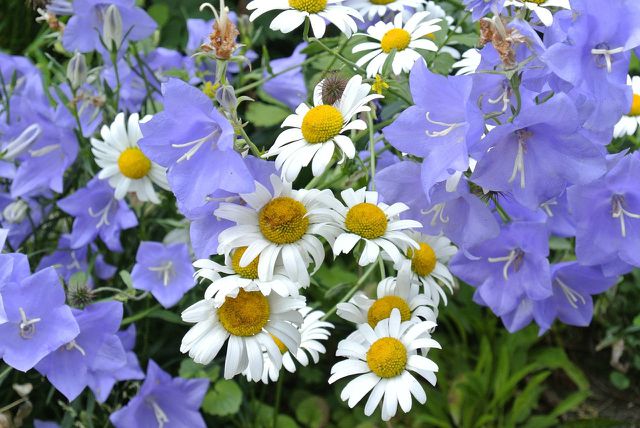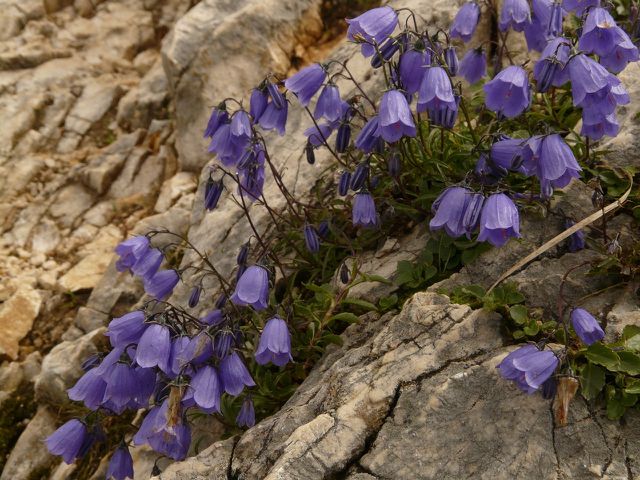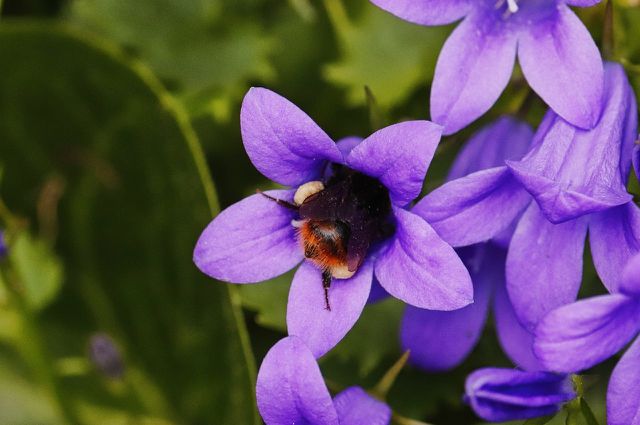
Bellflowers enrich every summer garden with their delicate purple flowers and are a regional alternative to exotic ornamental plants. With our tips, you too can grow them in a bed or pot.
Bellflower: Many different species
There are about 300 different species of bellflower family (Campanula) worldwide, which thrive in almost all regions of the temperate climate. In this country, about 20 species are native. Among them are bellflowers that grow only about ten to fifteen centimeters high, while others can reach a meter in height. Depending on the variety, the flowers are suitable for the bed, rock garden or wild shrub plantings. Their flowers are usually purple, pink or white.
Planting bellflower: location, sowing and variety

Campanulas are extremely easy to care for and undemanding – they grow in almost any soil. Among the many different varieties of Campanula, it is best to choose the one whose conditions of origin most closely match the conditions in your garden:
- Location: Most species of campanula feel most comfortable in a well-drained, nutrient-rich soil. If necessary, you can add a little sand to the soil before planting or sowing the flowers. This will ensure that the soil is loose. Bellflowers tolerate both sunny and semi-shady places. Only the wood bellflower prefers it completely shady.
- Planting: You should plant seedlings 20 to 45 centimeters apart, depending on how tall the plant will grow later. The taller bellflowers do well in a group with columbines, ferns, daisies and evening primroses – which make a magnificent sight in summer.
- Sowing: You can also sow bellflowers directly. The seeds germinate best at a temperature between 15 and 18 degrees – you should therefore only sow them directly in the bed if you are sure that it will not get much colder again. You can be on the safe side by growing the flowers on a windowsill. How you sow the seeds depends on the species: the seeds of the Carpathian bellflower should be generously covered with soil, while those of the Mary bellflower germinate better when they are exposed to daylight. Once the bellflowers are established in the bed, they multiply quickly by self-seeding.
- In the pot: If you want to grow the bellflower in a pot or box, you do not have to pay attention to any special features. Dalmatian bellflower is suitable as a pot plant because it is comparatively compact. In a balcony box, the star bellflower fits particularly well, whose long flower spikes hang over the edge of the pot and thus look especially pretty. It also looks great in a hanging pot indoors.
- High-growing varieties for a wild perennial planting are, for example, the peach-leaved bellflower (Campanula persicifolia) or the tangle bellflower (Campanula glomerata). On the other hand, the Carpathian bellflower (Campanula carpatica) and the Dalmatian bellflower (Campanula portenschlagiana) are suitable as ground covers, which also feel at home in a rock garden or in the crevices of walls.
Bellflower in the bed and pot: tips on care

Bellflowers usually bloom from June to August. By taking good care of them, you can extend the blooming period into the fall. Here’s how to care for bellflowers properly:
- Water: Keep the soil around bellflowers moist throughout, but try to avoid waterlogging.
- Fertilize: Bellflowers do not necessarily need to be fertilized. During the blooming period, you can enrich the soil with compost at intervals of about three weeks to provide the plants with additional nutrients.
- Pruning: Remove wilted flowers and leaves so that the flower has more energy to produce new flowers. High-growing varieties can be cut back in the spring before they sprout – the flower will grow back stronger. Low-growing species do not need to be cut back.
- Wintering: Many Campanula species are winter-hardy, for example the Carpathian bellflower and the bulbous bellflower. To make it easier for them in the bed, you can put leaves and straw around the plant as natural frost protection. Be sure to place bellflowers in pots or boxes in a cool, dark place indoors or out. Water them only enough to prevent the root ball from drying out completely.
- Bellflowers are often affected by fungal diseases. Cut off affected plant parts as soon as possible and try to reduce the moisture around the plant. Slugs also like to eat bellflower leaves.
Bellflower: Not only pretty, but also ecologically useful

Feral species of bellflower grow in meadows, pastures and roadsides. The conversion of these areas into intensively used farmland and the accompanying increased use of fertilizers and pesticides has led to some species of bellflower now being on the red list. Since bellflowers are readily approached by bees, bumblebees and butterflies, BUND, among others, cites them as a suitable plant for a wild bee meadow. By planting bellflowers in your garden or on your balcony, you are also helping to preserve biodiversity.


